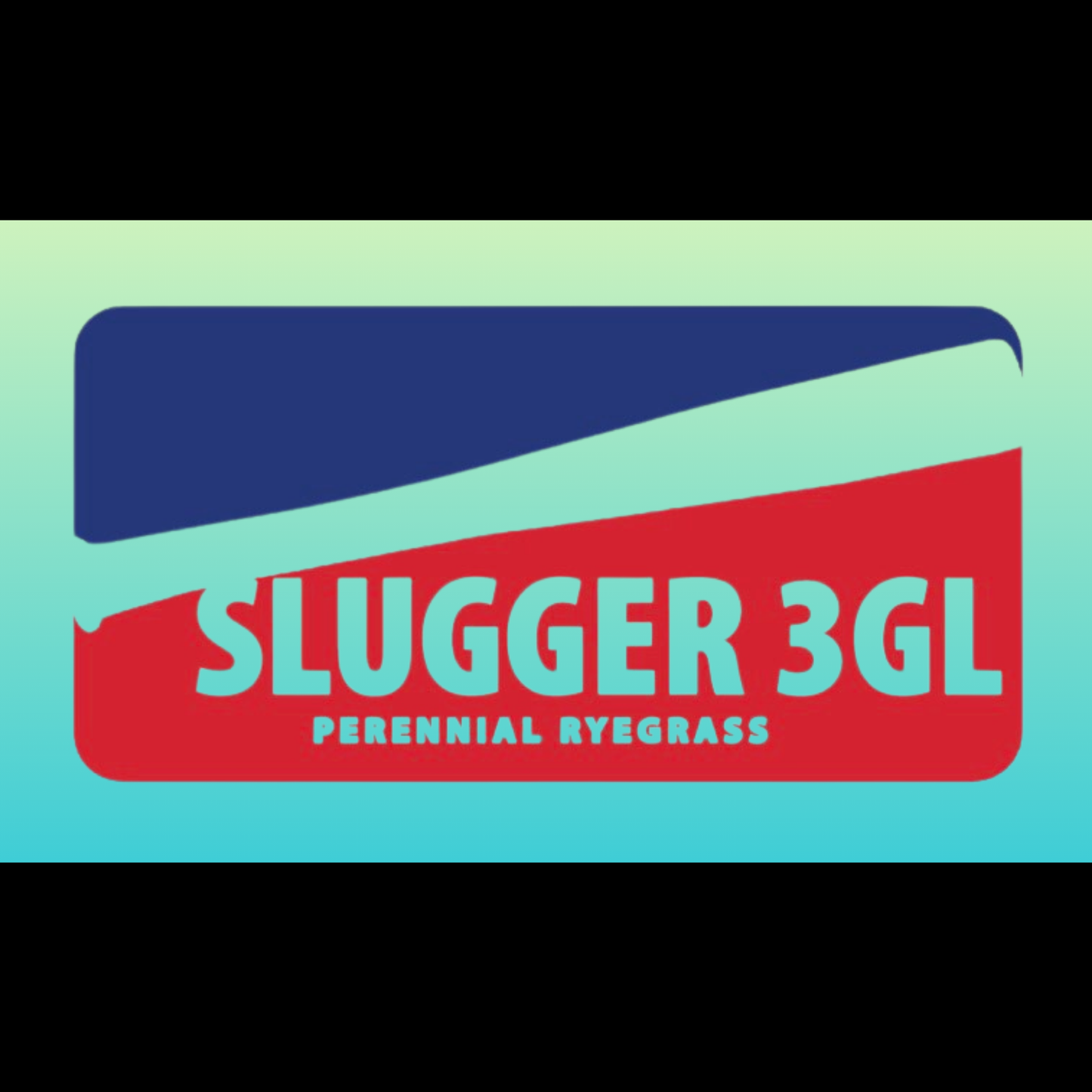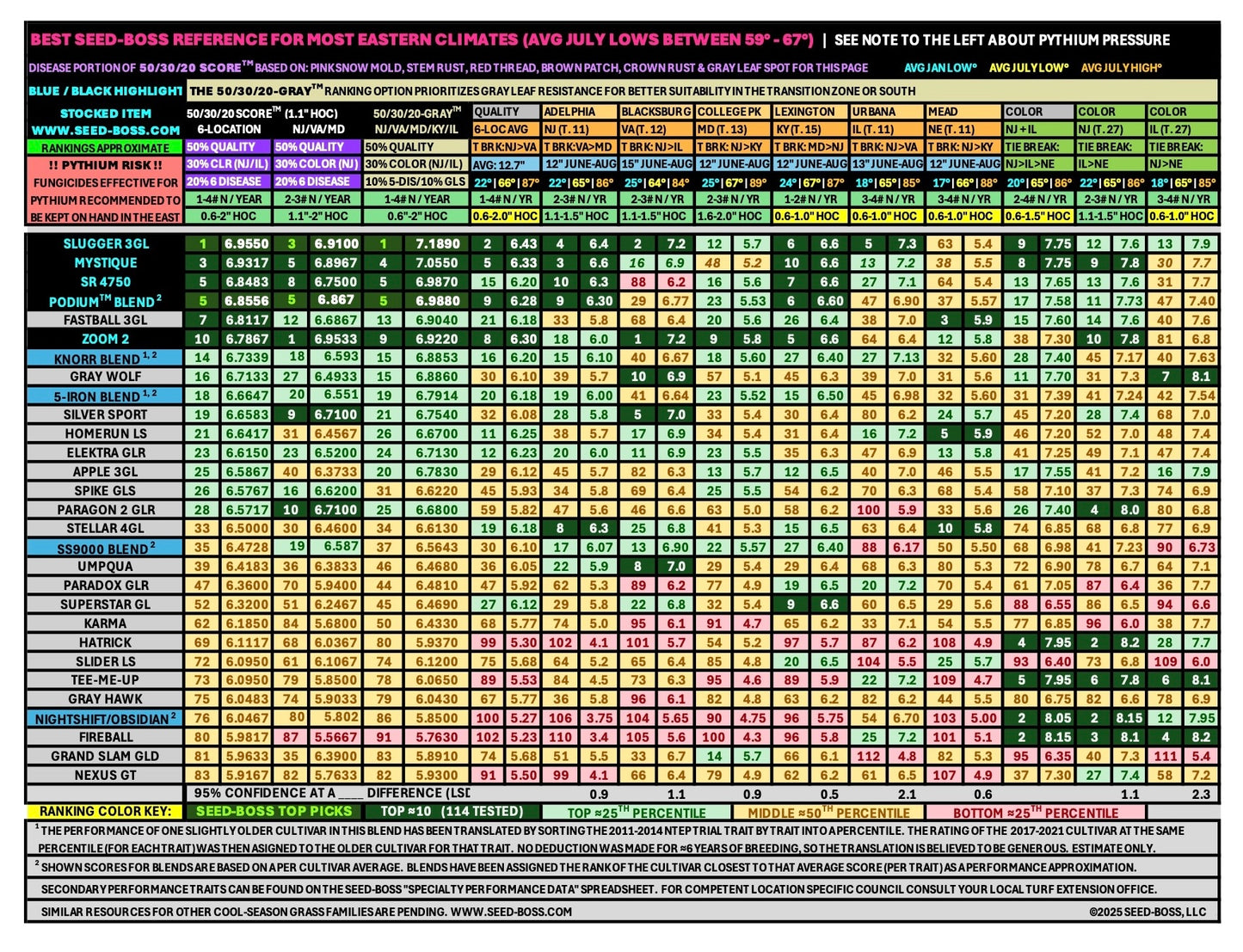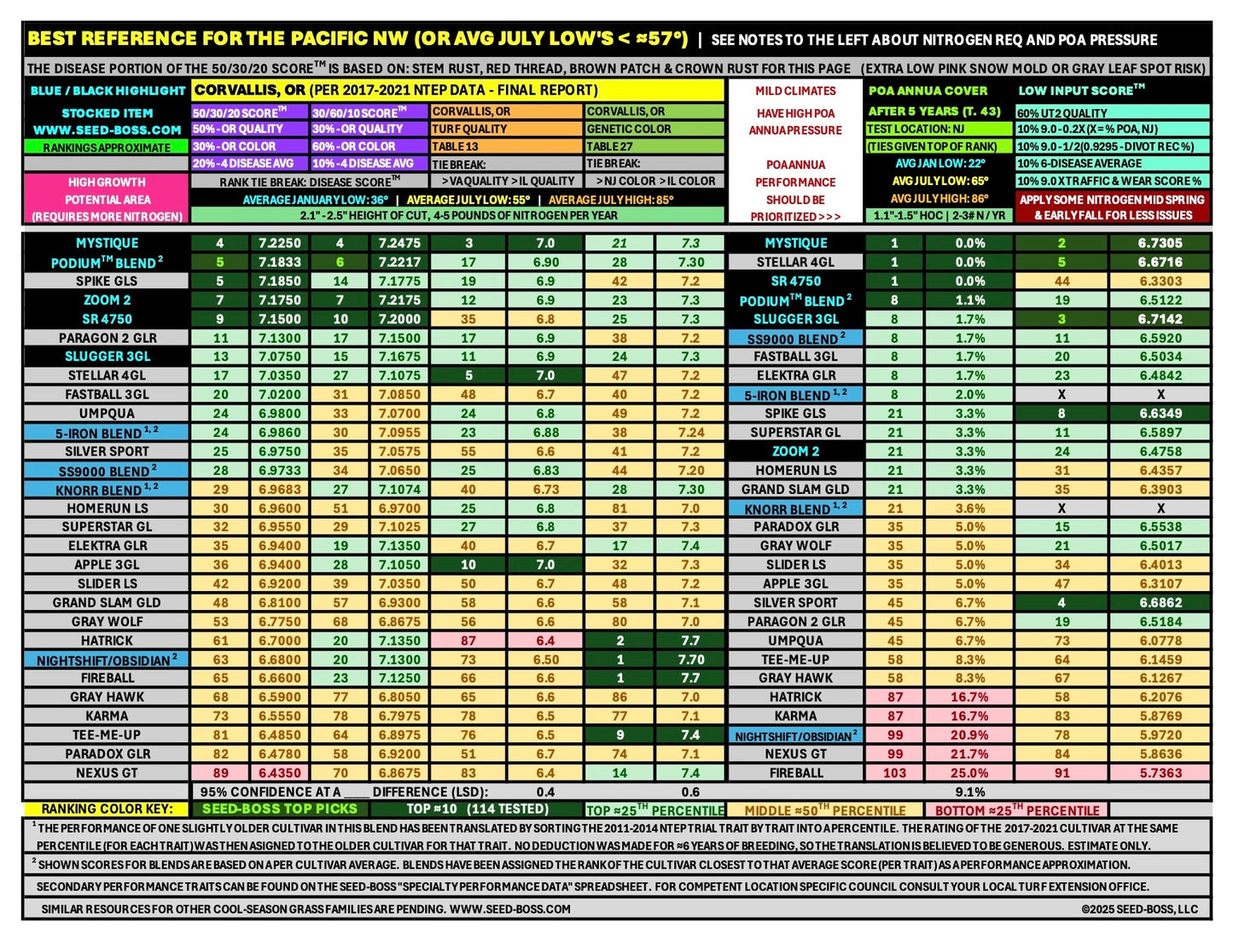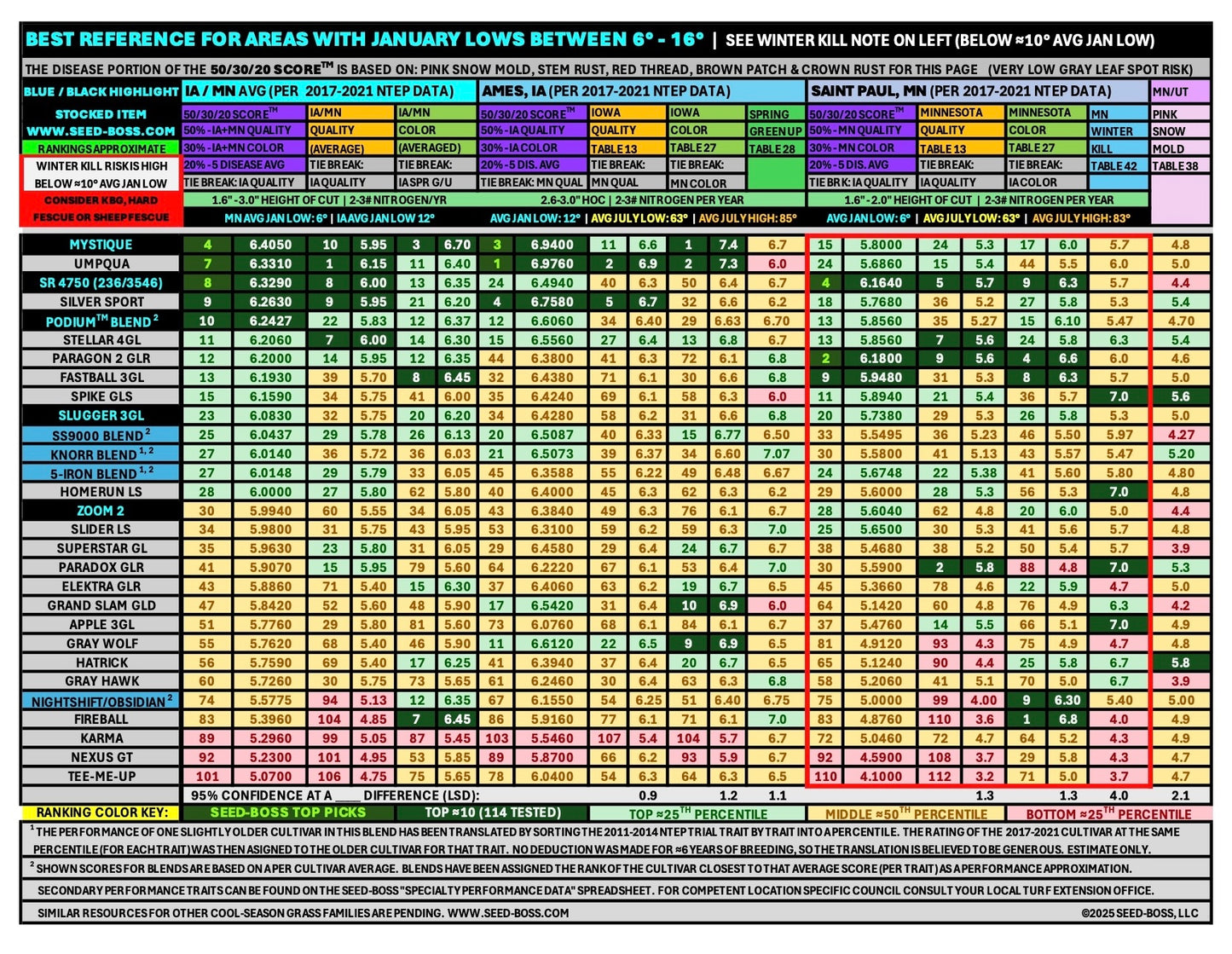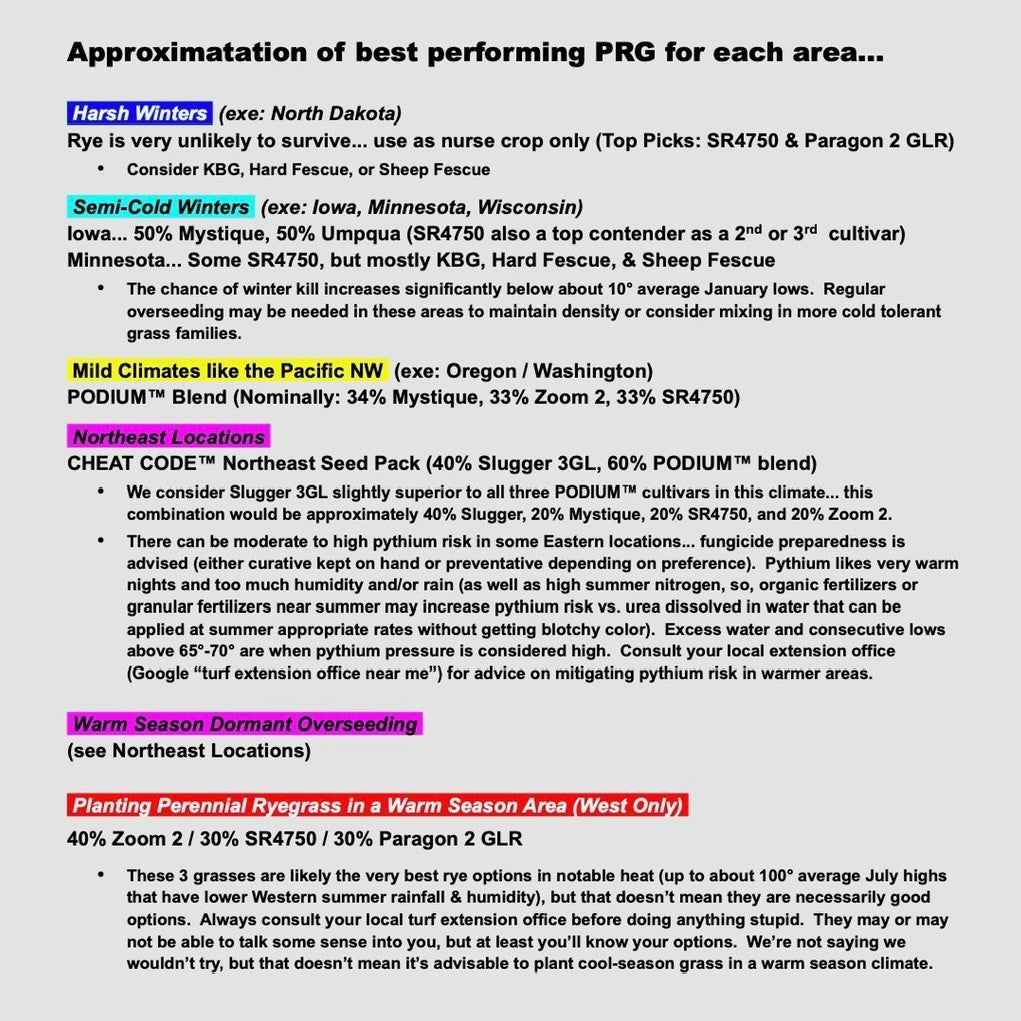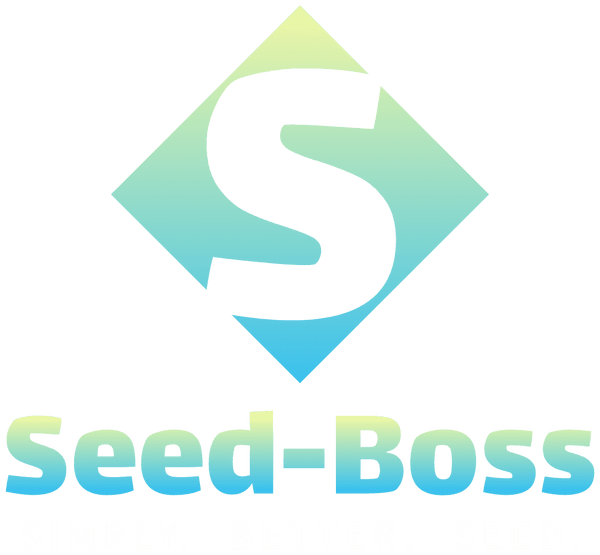Mountain View Seeds
Slugger 3GL Perennial Ryegrass Grass Seed tied for 2nd for gray leaf spot (8.7), had top 2% turf quality in the east (fertilized locations), top 10% color in the east (fertilized locations), top 8% drought, only 1.7% 5-yr poa annua (NJ), top 9% traffic.
Slugger 3GL Perennial Ryegrass Grass Seed tied for 2nd for gray leaf spot (8.7), had top 2% turf quality in the east (fertilized locations), top 10% color in the east (fertilized locations), top 8% drought, only 1.7% 5-yr poa annua (NJ), top 9% traffic.
Couldn't load pickup availability
This perennial ryegrass cultivar is the #1 ryegrass in northeast climates like New York, Pennsylvania, Illinois, Ohio, New Jersey, Virginia, Kentucky and Connecticut according to our 6-location eastern 50/30/20 Score™ (50% NTEP Quality, 30% NTEP Color NJ/IL, 20% 6-Disease Average from NTEP Tables 33-38 - per the 2017-2021 Final Report for PRG)... it also ranked 1st using our 5-location 50/30/20-Gray™ ranking system that assigns higher priority to gray leaf spot performance and quality specific to the transition zone, and it came in 3rd overall in fertilized eastern locations that were mowed at 1.1" or higher (NJ+VA+MD 50/30/20 Score™).
Slugger 3GL performed in fertilized NTEP locations in the east more consistently than any other cultivar and it is a variety that has nice secondary traits for performance as well such as premium disease performance, very low 5-year poa annua of only 1.7% (the average for all 114 cultivars tested was 10.6%), top 3% Low Input Score™ performance (for better minimal input performance), top 8% drought performance (UT2 quality under drought conditions) and Slugger 3GL ranked top 9% for our Traffic & Wear Score™ making it a very well rounded cultivar. Unlike Mystique, SR4750, and Zoom 2, Slugger 3GL does not have stolons so we recommend blending Slugger 3GL with PODIUM™ blend if a 100% rye lawn is desired (See our CHEAT CODE™ NE seed pack which is designed specifically for top performance in the northeast and transition zone regions). Slugger 3GL also performed well enough in the Pacific
Gray Leaf Spot Performance
Tied for 2nd of 114 Cultivars (8.7 out of 9.0, NJ)*
Note: this trait is bred specifically for the transition zone and southern overseeding but is of little value in northern climates.
Percent Poa Annua After 5 Years (table 43, NJ)
1.7%
Note: the average 5-year poa annua for all cultivars tested was 10.6%.
Color - All Fertilized NTEP Locations Averaged (Per table 27: CA7, IA1, IL1, MN1, NE1, NJ2 & OR1 are the fertilized locations)
≈14th of 114
Top 12% of all cultivars tested
Collective stem rust, red thread, brown patch, crown rust & gray leaf spot performance (The basis for the SEED-BOSS Disease Score™)
18th of 114 (≈9th of confirmed available cultivars) - 83.11% (Grade: B)
Top 16% of all cultivars tested for 5-disease performance
Traffic & Wear Score™ Rank
10th of 114
Top 9% of all cultivars tested
Note: This traffic reference is intended to be as comprehensive as possible for performance in this area. Score based on Tables 20 (mean quality, MA), Table 21 (2-week post-traffic quality, OR), Table 22 (2-week post-traffic quality, VA, 2018 & 2019 - averaged), & Table 44 (wear rating, NJ) - 4 Summary metrics summed into a single score and then ranked.
CLIMATE SPECIFIC PERFORMANCE
NOTE: to establish the best climate definition for your city simply Google YOUR CITY NAME + CLIMATE and look for average monthly lows for January and average highs and lows for July. Be advised that these climate definitions are based on arbitrary numbers that were observed to be loosely in line with NTEP locations data.
Semi-Harsh Winters - best SEED-BOSS reference for areas with an average January low slightly colder than 10°F. Increased risk of Winter kill should be weighed in these areas and may require regular overseeding to maintain density with ryegrass. Grasses that are generally considered more cold-tolerant include KBG, Hard Fescue, & Sheep Fescue.
Semi-Cold Winters - best SEED-BOSS reference for areas with an average January low between 10°-16°F such as much of Iowa and Wisconsin.
Mild Climate - best SEED-BOSS reference for mild areas of the Pacific Northwest such as much of Oregon, and Western Washington.
Eastern Climate - best SEED-BOSS reference for areas with warm Summers that have an average July low between 58°-67°F as is typical for almost all Eastern NTEP locations. This includes most of New Jersey, Virginia, Maryland, Illinois, Nebraska, Kentucky, Connecticut, New York and similar.
NOTE: See the "Perennial Ryegrass Preferred Locations Analysis" in photos to see why SEED-BOSS prefers the NJ, VA, and MD NTEP locations for the Eastern Climate definition regardless of closer proximity to IL, NE, KY, CT, or MI NTEP locations.
Semi-Harsh Winters (Iowa / Minnesota Locations)
*** Best SEED-BOSS reference for areas with an average January low slightly colder than 10°F. ***
All around 50/30/20 Score™ IA/MN - based on 50% IA/MN quality, 30% IA/MN color, & 20% 5-disease average (from tables 33, 34, 35, 36, & 38 of the NTEP 2017-2021 Final Report).
23rd of 114 (9th≈ of confirmed available cultivars) - 6.08
Top 20% of all cultivars tested.
Other popular cultivars: Mystique (4th - 6.41) | SR4750 (8th - 6.33) | Stellar 4GL (11th - 6.21) | Fastball 3GL (13th - 6.19) | Zoom 2 (30th - 5.99) | Elektra GLR (43rd - 5.89) | Grand Slam GLD (47th - 5.84) | Apple 3GL (51st - 5.78) | Hatrick (56th - 5.76) | Gray Hawk (60th - 5.73) | Fireball (83rd - 5.40) | Tee-Me-UP (101st - 5.07)
Turf Quality IA/MN (Rank tie break metric: IA quality)
≈32nd of 114 - 5.75
Top 28% of all cultivars tested.
Other popular cultivars: Stellar 4GL (6.00) | SR4750 (6.00) | Mystique (5.95) | Apple 3GL (5.80) | Gray Hawk (5.75) | Fastball 3GL (5.70) | Grand Slam GLD (5.60) | Zoom 2 (5.55) | Elektra GLR (5.40) | Hatrick (5.40) | Fireball (4.85) | Tee-Me-UP (4.75)
Color IA/MN (Rank tie break metric: IA Spring Green Up)
≈20th of 114 (≈12th of confirmed available cultivars) - 6.20
Top 18% of all cultivars tested.
Other popular cultivars: Mystique (6.70) | Fireball (6.45) | Fastball 3GL (6.45) | SR4750 (6.35) | Elektra GLR (6.30) | Stellar 4GL (6.30) | Hatrick (6.25) | Zoom 2 (6.05) | Grand Slam GLD (5.90) | Tee-Me-UP (5.65) | Gray Hawk (5.65) | Apple 3GL (5.60)
Semi-Cold Winters (Iowa Location)
*** Best SEED-BOSS reference for areas with an average January low between ≈10°-16°F ***
All around 50/30/20 Score™ Iowa - based on 50% IA quality, 30% IA color, & 20% 5-disease average (from tables 33, 34, 35, 36, & 38 of the NTEP 2017-2021 Final Report).
34th of 114 - 6.43
Top 30% of all cultivars tested.
Other popular cultivars: Mystique (3rd - 6.94) | Stellar 4GL (15th - 6.56) | Grand Slam GLD (17th - 6.54) | SR4750 (24th - 6.49) | Fastball 3GL (32nd - 6.44) | Zoom 2 (43rd - 6.38) | Elektra GLR (37th - 6.41) | Hatrick (41st - 6.39) | Gray Hawk (61st - 6.25) | Apple 3GL (73rd - 6.08) | Tee-Me-UP (78th - 6.04) | Fireball (86th - 5.92)
Turf Quality Iowa (Rank tie break metric: MN Quality)
≈58th of 114 - 6.2
Bottom 49% of all cultivars tested.
Other popular cultivars: Umpqua (6.9) | Mystique (6.6) | Grand Slam GLD (6.4) | Gray Hawk (6.4) | Hatrick (6.4) | Stellar 4GL (6.4) | SR4750 (6.3) | Tee-Me-UP (6.3) | Zoom 2 (6.3) | Elektra GLR (6.2) | Apple 3GL (6.1) | Fastball 3GL (6.1) | Fireball (6.1)
95% confidence at a 0.9 difference (LSD)
Color Iowa (Rank tie break metric: MN Color)
≈31st of 114 - 6.6
Top % of all cultivars tested.
Other popular cultivars: Mystique (7.4) | Umpqua (7.3) | Grand Slam GLD (6.9) | Stellar 4GL (6.8) | Elektra GLR (6.7) | Hatrick (6.7) | SR4750 (6.4) | Tee-Me-UP (6.3) | Gray Hawk (6.3) | Apple 3GL (6.1) | Fireball (6.1) | Zoom 2 (6.1)
95% confidence at a 1.2 difference (LSD)
Mild Climate (Oregon Location)
*** Best SEED-BOSS reference for The Pacific Northwest climate including mild areas in Washington State and Oregon ***
All around 50/30/20 Score™ Oregon - based on 50% OR quality, 30% OR color, & 20% 4-disease average (from tables 33-36 of the NTEP 2017-2021 Final Report).
13th of 114 (≈6th of confirmed available cultivars) - 7.08
Top 11% of all cultivars tested.
Other popular cultivars: Mystique (4th -7.23) | Zoom 2 (7th - 7.18) | SR4750 (9th - 7.15) | Stellar 4GL (17th - 7.04) | Fastball 3GL (20th - 7.02) | Elektra GLR (35th - 6.94) | Apple 3GL (36th - 6.94) | Grand Slam GLD (48th - 6.81) | Hatrick (61st - 6.70) | Fireball (65th - 6.66) | Gray Hawk (68th - 6.59) | Tee-Me-UP (81st - 6.49)
Turf Quality Oregon (Rank tie break metric: VA Quality > IL Quality)
≈11th of 114 cultivars - 6.9
Top 10% of all cultivars tested.
Other popular cultivars: Mystique (7.0) | Apple 3GL (7.0) | Stellar 4GL (7.0) | Zoom 2 (6.9) | SR4750 (6.8) | Elektra GLR (6.7) | Fastball 3GL (6.7) | Fireball (6.6) | Grand Slam GLD (6.6) | Gray Hawk (6.6) | Tee-Me-UP (6.5) | Hatrick (6.4)
95% confidence at a 0.4 difference (LSD)
Color Oregon (Rank tie break metric: NJ Color > IL Color)
≈24th of 114 - 7.3
Top 21% of all cultivars tested.
Other popular cultivars: Fireball (7.7) | Hatrick (7.7) | Tee-Me-UP (7.4) | Elektra GLR (7.4) | Mystique (7.3) | Apple 3GL (7.3) | Zoom 2 (7.3) | SR4750 (7.3) | Fastball 3GL (7.2) | Stellar 4GL (7.2) | Grand Slam GLD (7.1) | Gray Hawk (7.0)
95% confidence at a 0.6 difference (LSD)
Eastern Climate (Fertilized locations mowed at 1.1" or higher: NJ / VA / MD)
*** Best SEED-BOSS reference for fertilized EASTERN climates with average July lows ranging between 58°-67°F ***
All around 50/30/20 Score™ (1.1"+ HOC Locations) - based on 50% turf quality NJ / VA / MD, 30% color NJ, & 20% 6-disease average (from tables 33-38 of the NTEP 2017-2021 Final Report).
3rd of 114 (≈2nd of confirmed available cultivars) - 6.91
Top 3% of all cultivars tested.
Other popular cultivars: Zoom 2 (1st - 6.95) | Mystique (5th - 6.90) | SR4750 (8th - 6.75) | Fastball 3GL (12th - 6.69) | Elektra GLR (23rd - 6.52) | Stellar 4GL (30th - 6.46) | Grand Slam GLD (35th - 6.39) | Apple 3GL (40th - 6.37) | Hatrick (68th - 6.04) | Gray Hawk (74th - 5.90) | Tee-Me-UP (79th - 5.85) | Fireball (87th - 5.57)
Turf Quality NJ / VA / MD (Rank tie break metric: IL Quality)
Averaged Quality: ≈3rd of 114 - 6.33
Top 3% of all cultivars tested.
Other popular cultivars: Zoom 2 (6.33) | Mystique (6.23) | Stellar 4GL (6.13) | Elektra GLR (6.13) | SR4750 (6.03) | Grand Slam GLD (5.97) | Fastball 3GL (5.93) | Apple 3GL (5.90) | Gray Hawk (5.57) | Tee-Me-UP (5.13) | Hatrick (5.00) | Fireball (4.43)
Color NJ (Rank tie break metric: IL Color) - Note: color not available for VA or MD
≈12th of 114 (≈9th of confirmed available cultivars) - 7.6
Top 11% of all cultivars tested.
Other popular cultivars: Hatrick (8.2) | Fireball (8.1) | Tee-Me-UP (7.8) | Mystique (7.8) | Zoom 2 (7.8) | SR4750 (7.6) | Fastball 3GL (7.6) | Grand Slam GLD (7.3) | Apple 3GL (7.2) | Elektra GLR (7.1) | Stellar 4GL (6.8) | Gray Hawk (6.6)
95% confidence at a 1.1 difference (LSD)
Breeder Specified New Lawn Seed Rate for Slugger 3GL: 5-7 pounds per 1,000' (220-300 lbs / acre)
Breeder Specified Overseeding Seed Rate for Slugger 3GL: 3-5 pounds per 1,000' (130-220 lbs / acre)
TIPS FOR SUCCESS
-
Seed germination basics:
- Bare dirt is ideal (or at least no thatch)
- Adhere to proper seed rate... too little seed means increased weed pressure and increased erosion risk, and too much seed can mean lesser color and increased risk of disease.
- Rake seed in w/ a Groundskeeper 2 rake (or slit seed if you can)... grass seed sitting on the surface will be unlikely to germinate
- Keep soil moist and never dry or soaked until germination... several light waterings per day are usually necessary... I physically touch the dirt prior to watering most of the time... often soil is already moist and more hours can pass before water is needed.
- Water for enough days to germinate your slowest germinating seed.
- A germination rate of 50% starts around 50° soil temps for most cultivars... seeding before soil is warm enough may reduce germination. I like to aim for 50-55° soil temps for spring seeding (slow germination but better summer hardiness) or let soil dip to about 60-65° (or when regular light rain is expected). It's important not to seed too late for fall seeding especially on bare dirt because if soil cools too much grass seed won't germinate at all.
- For spring seeding, regular early nitrogen is extra important to maximize establishment prior to summer conditions. 1/2# of N per 1,000 square feet at seeding as well as 1/2# of N about every 3-4 weeks for at least a few months can get the grass off to a good start (Note: 1.09# of urea dissolved in water / 1,000' = 1/2# of N). The larger the droplets the better... I like a TeeJet TTI11004 spray tip for applying fertilizer.
- After germination has concluded, the grass only needs to be watered to the point of survival... 1 fairly light watering every day or two is likely enough water. If you see the grass start to wilt more water is needed.
- Once the grass is a few weeks old, not enough water is usually better than too much, since disease loves excess water! We recommend owning a soil probe; If you aren't sure if you should water, simply pull a soil core or two... cores should be quite dry before water is actually needed. Water between 0.5"-0.62" per watering with at least a few dry down days between waterings for best results. Time of day matters with water... watering should be concluded around the time that sunlight first hits an area (often some time before 8:00AM). Evening & night watering maximizes disease pressure and watering during daylight hours can be much less efficient due to excessive evaporation prior to percolation.
- With rare exception, I recommend avoiding potassium, micronutrients, and phosphorus like the plague and just apply nitrogen to get the best possible turf quality with the least amount of problems and work. Foliar iron is ok, but I personally don't use it. Before you assume a soil applied product is going to improve your soil, we recommend taking a cold shower, slap yourself in the face (if necessary), and then binge Turfgrass Epistimology study reviews on YouTube until the urge to purchase a given product subsides.
- I believe in full renovations rather than overseeding when a major upgrade is desired. Overseeding yields comparatively poor germination rates and the original (generally less desirable) grasses will largely survive and water down your results. The value for time with full renovation is there in my experience.
-
Observe the 1/3 rule with sharp blades. An All American Sharpener style grinding jig is great if rotary mowing, and a flat file can be used to push the burr off for that last bit of sharpness. The 1/3 rule is per day or two... not per pass. If you can't mow frequently enough to observe the 1/3 rule, bringing the height of cut up allows more time between mows. 1/3 of 4" allows more growing time than 1/3 of 2".
-
If the ground is mushy to the touch, try to wait for a dryer day to mow if possible. Most compaction happens when ground is too wet. The easiest way to cure compaction is often to prevent it, but of course, sometimes compromises have to be made to keep grass height under control.
-
Where there's lots of shade, mow higher or consider TTTF or fine fescue.
-
Where there's traffic, more nitrogen is needed. Where there's shade, less nitrogen is needed.
-
Nitrogen rate should match growth potential. If it's growing slowly due to heat or cold, lower rates should be applied or none at all. Avoid medium or heavy nitrogen applications in summer to reduce disease. In the most mild of areas sometimes the highest growth potential (and the most N) happens during summer. If you see dollar spot, red thread, or rust, those will generally improve when nitrogen is added as long as temperature or light isn't the limiting nutrient. Heat loving diseases that prefer high nitrogen include brown patch, pythium, and leaf spot. Try to take nitrogen timing and rate seriously to reduce disease pressure. We do offer a customized nitrogen schedule service here if interested... such might be cheaper than extra fungicides and also offer nice color and better drought performance in my experience.
-
This product will almost certainly contain some annual rye... we recommend not allowing field conditions (keep it mowed) until after all seed heads are cleared to ensure annual rye is not a reoccurring annoyance each year.
- Perennial rye has unusually nasty woody seed head stocks that can leave a yellow hue to your lawn for months and months if not addressed. An annual "seedhead reset" can greatly reduce the effects of this undesirable trait of ryegrass (see below). A seedhead reset is moderately stressful to the lawn and ideally should not be attempted under times of high disease pressure or other major stresses.
How to do a seed head reset:
- Once the annual seed head stage starts each year, mow at the usual mowing height for about a month
- Then, mow often (with very sharp blades) and gradually reduce the mowing height over the next few weeks to cut as much of the seed head stock off as possible, but make sure you stay above the crown of the plant to ensure less stress while the plant regenerates.
- About 1 week before the last mow, apply approximately .3# of nitrogen and make sure the lawn is receiving around 1" of water per week via rainfall and irrigation (early AM water is efficient and minimizes disease pressure... around 1/2" of water every 3-4 days is an approximation for most areas during drought.)
- Return to your original cutting height. The seed head stocks should be hidden below soft new blades of grass and the straw colored seedhead stocks should be well hidden from view.
Shipping available withing the continental USA only. Shipping not guaranteed to be available to islands or New York City due to excessive freight costs. Purchase price may be canceled and refunded at seller's option for out of area shipments.
Disclaimer: For any details relevant to decision making related to grass seed, we recommend referencing NTEP directly when possible. This resource is intend as a user friendly supplement to NTEP data (NOT A REPLACEMENT). Comparative gaps beyond LSD (least statistical difference) on NTEP offer a 95% confidence level. When LSD is not available, no specific confidence level is possible or implied... these are simply the raw numbers. In general the higher the gap, the higher the confidence and small gaps should be considered as equals in most cases. This website is constantly being improved for accuracy to the best of my ability... if you notice an error or inconsistency or don't understand where certain came from, please don't hesitate to bring it to my attention via email or text. This website almost certainly does contain unintentional typos or errors and possibly out of date information (for example: when brands change the cultivars in their blends).
Seed-Boss makes no guarantee of performance in your climate or under your management practices. Minimizing stress on the grass tends to create the healthiest and best looking grass - which means food (occasional nitrogen), an occasional 1/2" water during drought, sun light, sharp blades, observing the 1/3 rule, etc. All grass seed sold has been tested for germination of at least 85%, and typically at least 90%... if the grass seed does not germinate the buyer acknowledges improper seed to soil contact, improper soil moisture during germination phase, and/or inappropriate soil temperatures and agrees to not blame seed (that was tested as good).
If you notice anything inaccurate or that could be improved for accuracy, please email us at SUPPORT@SEED-BOSS.COM. Our aim is the highest degree of accuracy possible and that process includes peer review.
